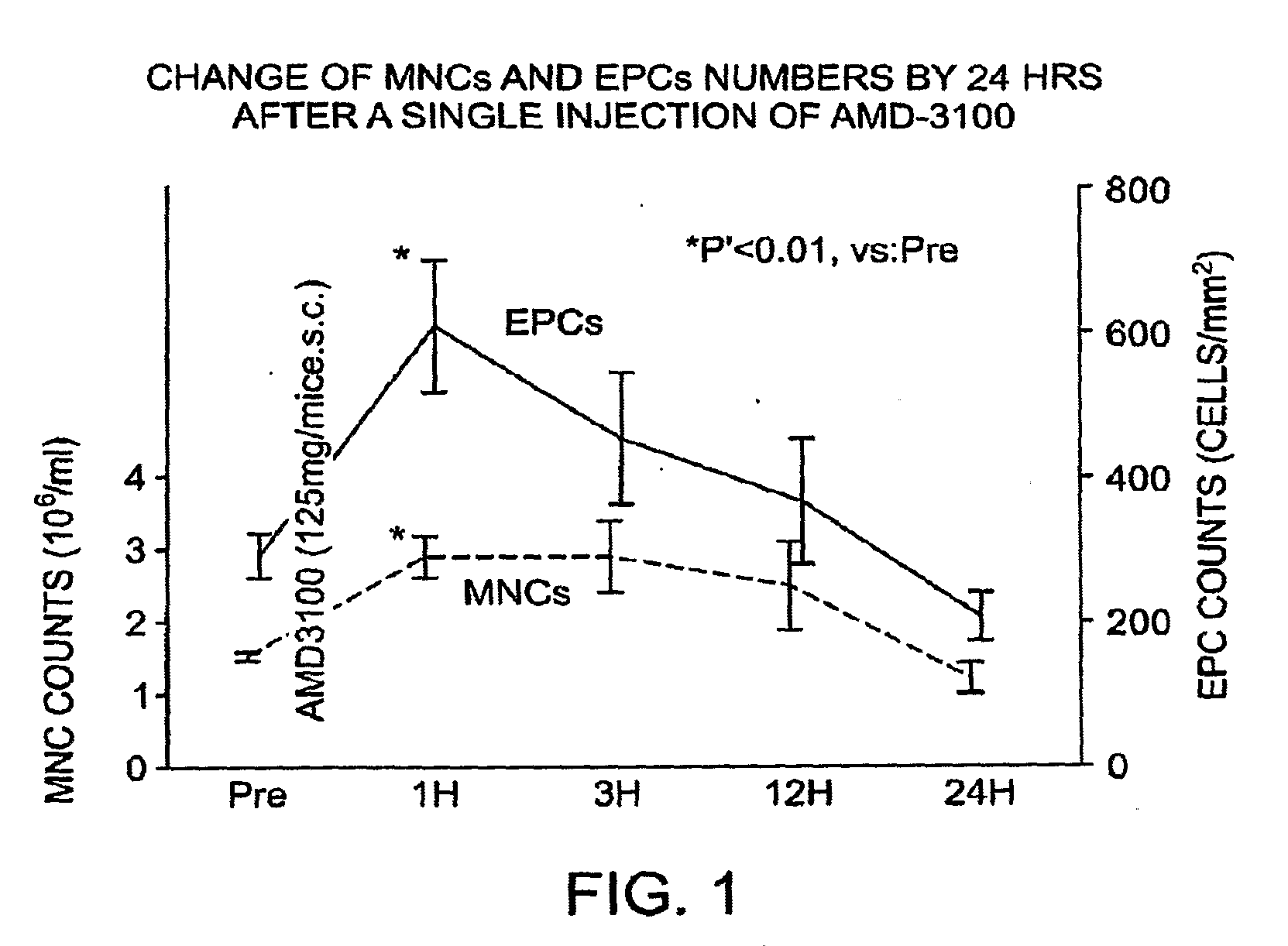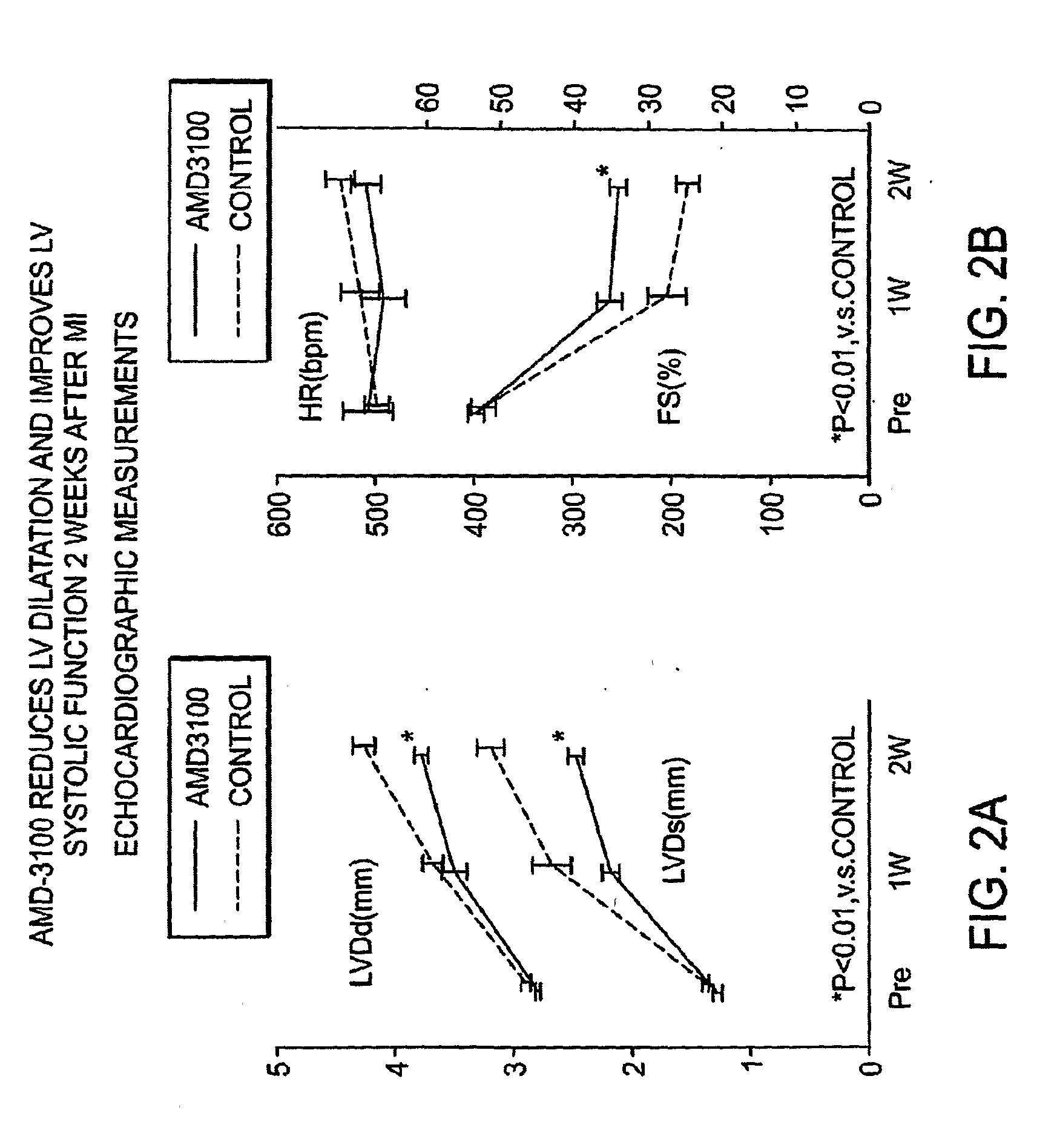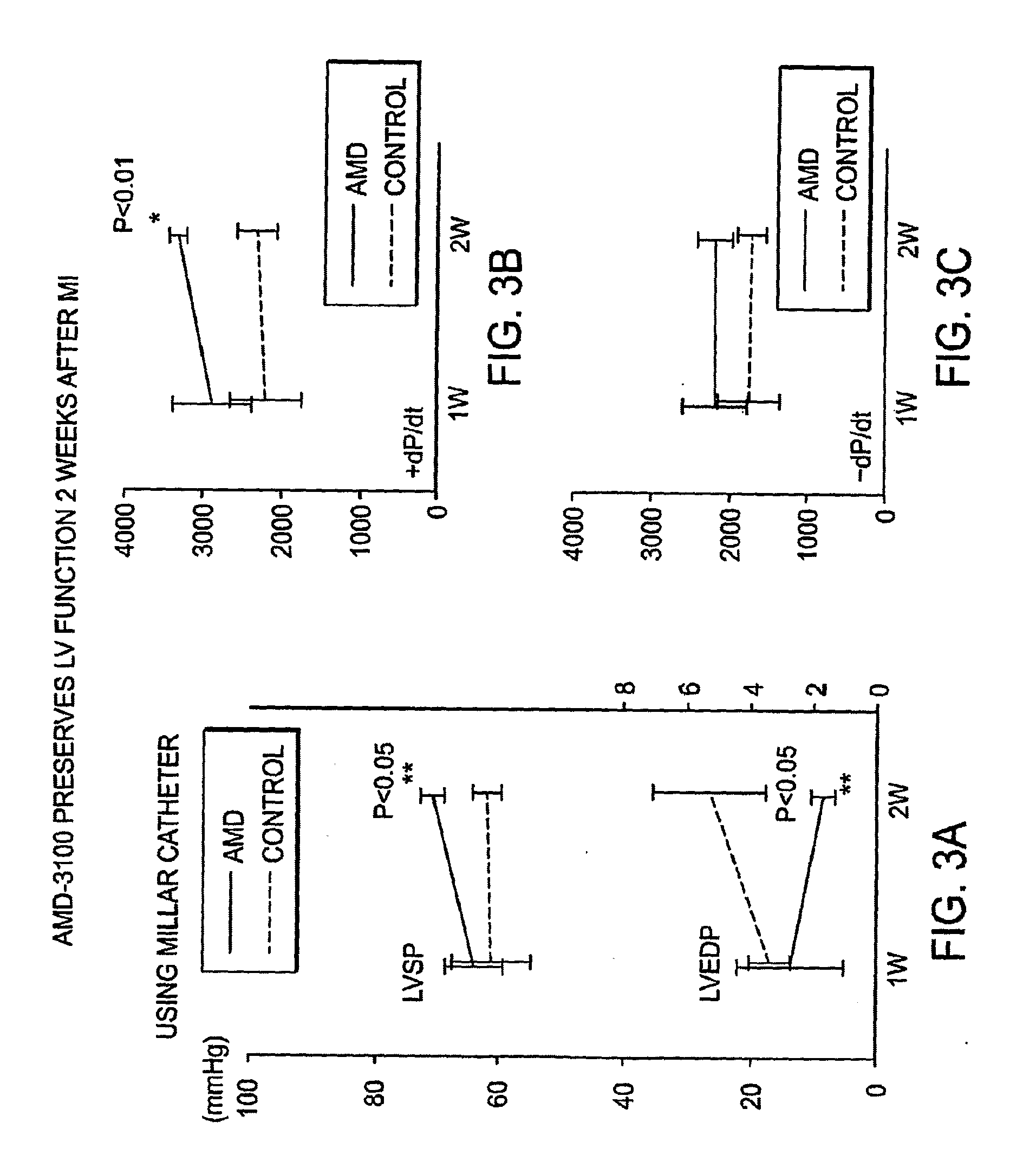Combination of CXCR4 Antagonist and Morphogen to Increase Angiogenesis
a morphogen and angiogenesis technology, applied in the field of cxcr4 antagonist and morphogen to increase angiogenesis, can solve the problems of limited epcs capable of responding to angiogenic proteins, limited epcs, and patients who may not respond well to conventional therapeutic approaches, so as to promote the presence of circulating progentitor cells, prevent, treat or alleviate symptoms, and promote the effect of enhanced frequency of epcs
- Summary
- Abstract
- Description
- Claims
- Application Information
AI Technical Summary
Benefits of technology
Problems solved by technology
Method used
Image
Examples
example
Example 1
Cultured EPC Assay
[0150]Animals used in this study were handled in accordance with the guidelines of the Animal Care and Use Committee at St. Elizabeth's Medical Center of Boston. AMD3100 (125 μg in 100 μl of saline) was administered to eight-week old male FVB / N mice (Jackson Lab, Bar Harbor, Me.) aged 8 weeks by subcutaneous single injection before sacrifice. Control mice received 100 μl of saline according to same procedures by a similar procedure. Both groups of mice were sacrificed to harvest, and peripheral blood was harvested from subgroups of mice at 1, 3, 12 and 24 hours after the injection. At each time points, blood was obtained from the heart immediately before sacrifice and separated by Histopaque-1083 (Sigma) density gradient centrifugation with a Histopaque-1083 (Sigma). Light-density mononuclear cells were harvested and, washed twice with Dulbecco's phosphate-buffered saline supplemented with to which 5 mM EDTA had been added. Contaminated red blood cells wer...
example 2
Change of MNC and EPC Numbers By 24 Hours After a Single Injection of AMD-3100
[0153]Mice were injected as described in Example 1. As shown in FIG. 1, the numbers of both MNCs and EPCs rapidly increased after AMD-3100 injection, resulting in maximal MNCs and EPCs 1 hour after drug administration (613±89 cells / mm2 for AMD-3100 vs. 292±30 for control, P<0.01). The number of EPCs, identified by acLDL uptake and BS-1 lectin reactivity, increased at one hour after injection and returned to baseline within 24 hours after injection. These values returned to baseline within 24 hours (n=5 experiments). Such methods can be used for study of the compositions and methods of the instant invention. It is expected that use of the compositions and methods of the invention would also increase the number of MNCs and EPCs.
example 3
Functional Study of AMD-3100 Injection After Myocardial Infarction
[0154]Eight-week old male FVB mice were anesthetized with sodium pentobarbital (50 mg / kg IP). The animals were intubated orally with a 22G IV catheter and artificially ventilated with a respirator (Harvard Apparatus). A left intercostal thoracotomy was performed and the ribs were retracted with 5-0 polypropylene sutures. After the pericardium was opened, the left anterior descending (LAD) branch of the left coronary artery was ligated proximal to the bifurcation between the LAD and the diagonal branch using 8-0 polypropylene sutures and visualized with a dissecting microscope. Positive end-expiratory pressure was applied to fully inflate the lungs, and the chest was closed with 7-0 polypropylene sutures. After the closure of chest wall, mice randomly received either a single subcutaneous injection of 125 μg AMD3100 (AMD group) or saline (control group). After physiological assessment at one, two and four weeks after M...
PUM
| Property | Measurement | Unit |
|---|---|---|
| frequency | aaaaa | aaaaa |
| nucleic acid | aaaaa | aaaaa |
| systolic pressure | aaaaa | aaaaa |
Abstract
Description
Claims
Application Information
 Login to View More
Login to View More - R&D
- Intellectual Property
- Life Sciences
- Materials
- Tech Scout
- Unparalleled Data Quality
- Higher Quality Content
- 60% Fewer Hallucinations
Browse by: Latest US Patents, China's latest patents, Technical Efficacy Thesaurus, Application Domain, Technology Topic, Popular Technical Reports.
© 2025 PatSnap. All rights reserved.Legal|Privacy policy|Modern Slavery Act Transparency Statement|Sitemap|About US| Contact US: help@patsnap.com



